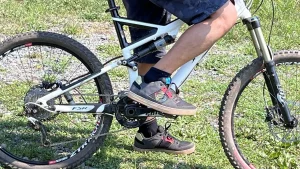What is the Average Male Grip Strength?
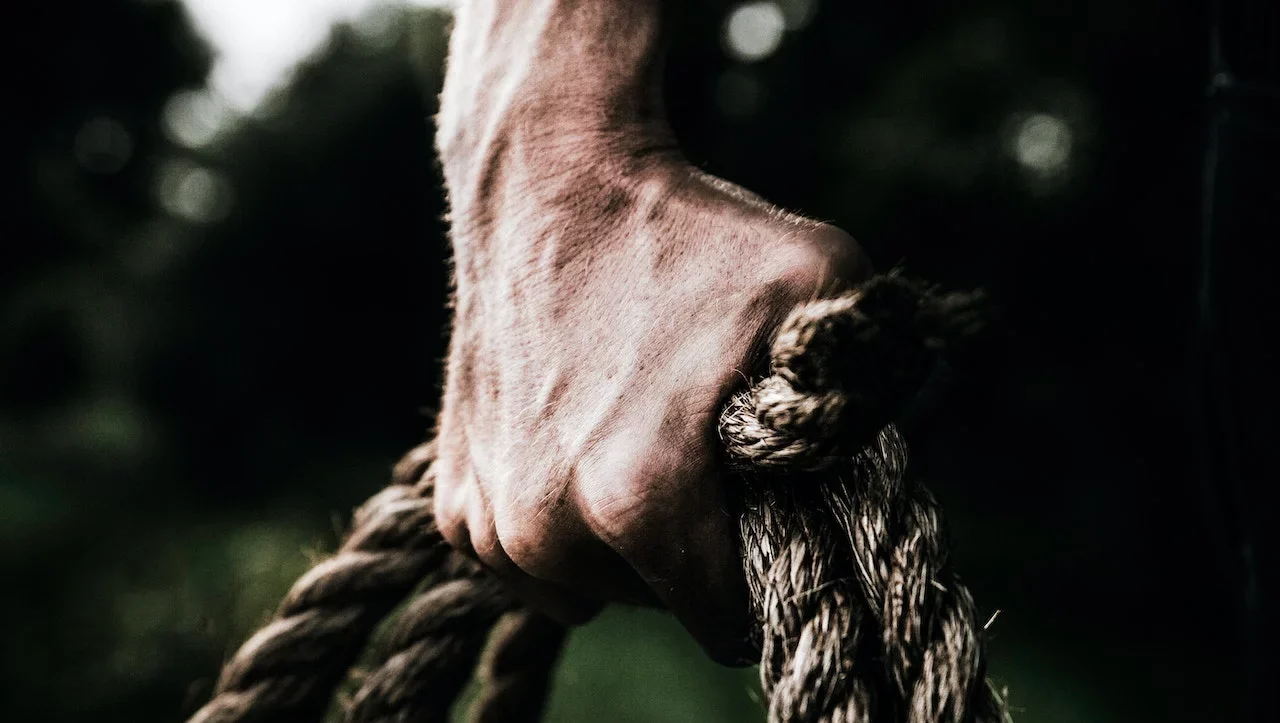
Grip and grip strength is a hidden secret of the training community. It’s the underlying success-driver behind some of the world’s top weight lifters. Improving grip strength and enhancing the structural tendons in your fingers and hands can take your workouts to the next level. Let’s explore grip strength, its value in your workouts, and the steps you can start taking today to enhance your grip.
Table of Contents
What Is Grip Strength?
What is grip strength? Grip strength refers to the amount of force you can exert with your hands. It’s a really critical element of overall fitness, and it can be improved through specific exercises. Grip strength helps you lift heavier weights, perform everyday tasks around the home more easily, and improves your performance in sports and personal training.
Grip Strength Rating
The average male grip strength is 46kg or 101lbs according to the latest data from Journal of Hand Therapy. The average male grip strength is an average of male age, ability, and weight lifting experience. The following table shows how grip strength changes as males age:
Grip Strength Ratings for Males (in kg)
| Years of Age | Weak Grip | Normal Grip | Strong Grip |
|---|---|---|---|
| 10-11 | < 12.6 | 12.6-22.4 | > 22.4 |
| 12-13 | < 19.4 | 19.4-31.2 | > 31.2 |
| 14-15 | < 28.5 | 28.5-44.3 | > 44.3 |
| 16-17 | < 32.6 | 32.6-52.4 | > 52.4 |
| 18-19 | < 35.7 | 35.7-55.5 | > 55.5 |
| 20-24 | < 36.8 | 36.8-56.6 | > 56.6 |
| 25-29 | < 37.7 | 37.7-57.5 | > 57.5 |
| 30-34 | < 36.0 | 36.0-55.8 | > 55.8 |
| 35-39 | < 35.8 | 35.8-55.6 | > 55.6 |
| 40-44 | < 35.5 | 35.5-55.3 | > 55.3 |
What Are the Grip Strength Muscles?
If you hold the forearm of your right hand with the left hand and try to make a right fist, you can feel the forearm muscles tightening.
The forearm muscles, including the flexors and extensors, are the most important for grip strength. Flexors are muscles that flex, or bend, a joint. These muscles are located on the front and back of your forearm, and they control the movement of your wrist and fingers. These grip strength muscles include:
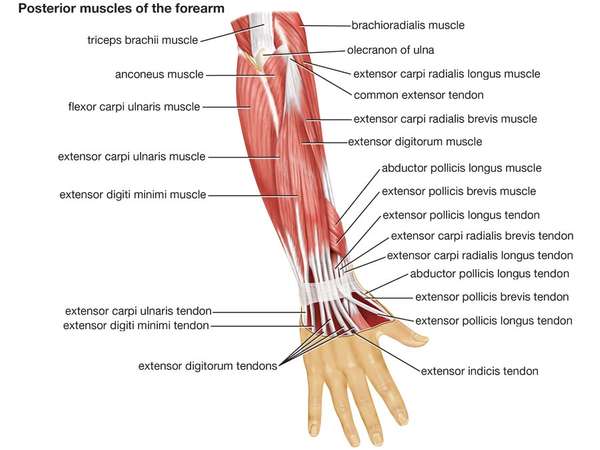
Flexor Digitorum Profundus: This muscle is responsible for flexing the middle and distal joints of the fingers. It allows you to bend your fingers to grip objects or make a fist.
Flexor Digitorum Superficialis: This muscle flexes the proximal joints of the fingers. It’s involved in actions like gripping, holding objects, and typing on a keyboard.
Flexor Carpi Radialis: This muscle flexes the wrist and also contributes to the radial deviation of the hand (moving it toward the thumb side).
Flexor Carpi Ulnaris: This muscle flexes the wrist and contributes to the ulnar deviation of the hand (moving it toward the little finger side).
- Flexor Pollicis Longus: Responsible for flexing the thumb, this muscle is involved in actions like gripping objects between the thumb and fingers.
Extensor Digitorum: This muscle extends the fingers, allowing you to straighten them after bending.
Extensor Carpi Radialis Longus and Brevis: These muscles are responsible for extending the wrist and assisting in movements like lifting the hand upward (dorsiflexion) and moving it away from the midline (abduction).
Extensor Carpi Ulnaris: This muscle extends the wrist and assists in ulnar deviation (moving the hand toward the little finger side).
Extensor Pollicis Longus: Extends the thumb and is involved in actions like giving a thumbs-up gesture.
Extensor Pollicis Brevis: Also extends the thumb, allowing you to straighten it after flexing.
These muscles work together to create a balance between flexion and extension of the wrist, fingers, and thumb. When you grip an object, the flexor muscles contract to close your hand around it, while the extensor muscles provide stability and balance by keeping the hand aligned properly. Similarly, during tasks that require fine motor control, both groups of muscles work together to create precise movements.
Overall, the coordination between the flexor and extensor muscles of the forearm is essential for performing everyday activities, from basic hand movements to more complex tasks that involve manual dexterity and strength.
Exercises to improve Grip Strength
Most of the pulling movements tend to improve your forearm and grip strength, as they employ the flexor muscles.
The following exercises can strengthen the forearms and improve grip strength.
Farmer’s walks
hold a heavy object, like a dumbbell or kettle-bell, in each hand and walk for a set distance or time.
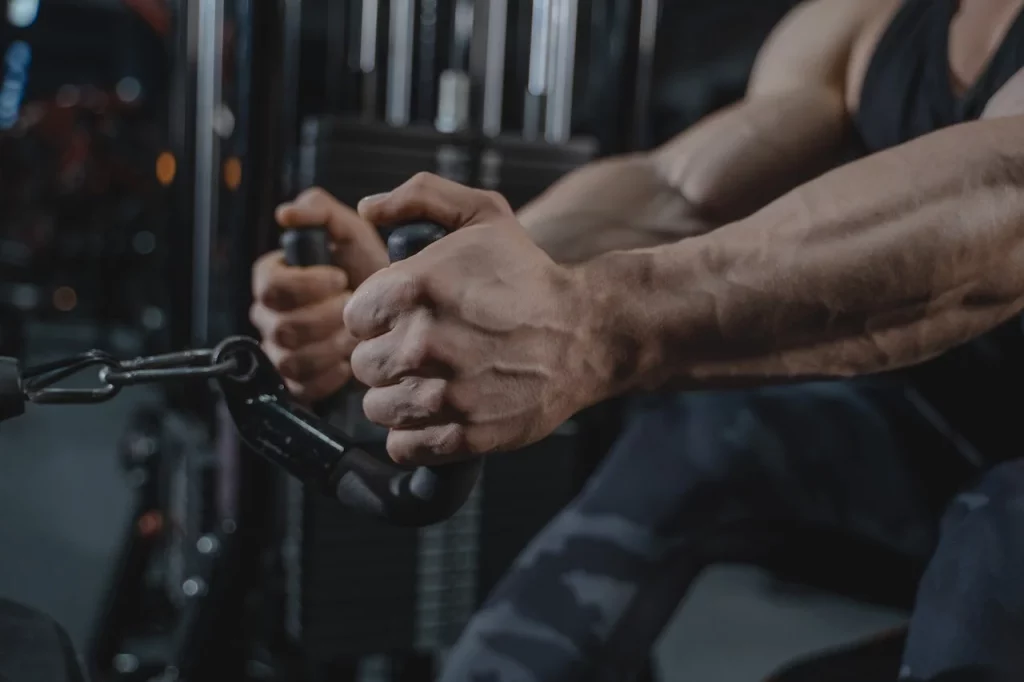
Dead-hangs
hang from a bar or pull-up bar for as long as possible, and it’s a great exercise for your grip, forearms, and shoulders.
Plate pinch
Hold a weight plate between your fingers and thumb for as long as possible.
Rope Climbs
if you have access to a rope attached to a ceiling, try climbing it using only your hands. Chances are you will not be able to go far. But practise every chance you get as this would be a very good forearm and shoulder building exercise.
As you improve your strenght, add more time or weight to the above movements to add more challenge and gain strength.
what are the benefits of a strong grip for workouts?
Having a strong grip can offer several benefits when it comes to workouts and overall physical fitness and workout performance.
Enhancing grip strength improves workouts in the following ways:

1. Increased Weightlifting Performance: A strong grip allows you to hold onto heavier weights and for longer, for exercises such as dead-lifts, rows, and pull-ups. When your grip strength is solid, you’re less likely to be limited by your ability to hold onto the weight, enabling you to challenge your muscles more effectively.
2. Enhanced Muscle Activation: A strong grip can lead to increased muscle activation in the forearms, wrists, and even upper arms. This activation can contribute to better overall muscle development and strength gains.
3. Reduced Imbalances: Weak grip strength can lead to muscle imbalances, as stronger muscles compensate for weaker ones. This can result in poor form during exercises and potential injury. A strong grip helps maintain balanced muscle development and proper exercise form.
4. Improved Endurance: In many sports and activities, grip strength is essential for endurance. Whether you’re rock-climbing, holding onto a bar during gymnastics, or performing obstacle course races, a strong grip can help you maintain your performance for longer periods.
5. Injury Prevention: A strong grip provides better control and stability during exercises, reducing the risk of weights slipping or objects being dropped. This can help prevent accidents and injuries caused by equipment mishaps.
6. Better Core Activation: Certain exercises, such as kettle-bell swings, require a strong grip to maintain control of the weight. This can lead to improved core engagement and stability as you work to control the movement. As you start lifting heavier kettle-bells, your core also gets stronger through this exercise.
7. Functional Strength: Grip strength is a fundamental component of functional strength, which is the ability to perform real-world tasks effectively. Whether you’re carrying groceries, moving furniture, or performing manual labor, a strong grip makes these tasks easier and safer.
8. Versatility in Training: A strong grip opens up possibilities for diverse training methods. You can incorporate exercises like farmer’s walks, hanging variations, and grip-specific training tools (such as grip trainers) to target your grip directly and challenge your overall strength.
To develop a strong grip, consider incorporating grip-specific exercises into your training routine and gradually increasing the weight and intensity. However, it’s essential to ensure a balanced approach to training, as overtraining the grip muscles could lead to strains or imbalances.
Testing your Grip Strength
After you have trained your forearms, how do you test how much forearm strength you have gained?
There are several methods you can use to test grip strength. These tests can provide you with a measure of your overall hand and forearm strength.
Here are a few grip strength testing methods to consider:
- Hand Dynamometer Test: A hand dynamometer is a device specifically designed to measure grip strength.
– Hold the dynamometer in your hand with your arm at your side and your elbow at a 90-degree angle.
– Squeeze the dynamometer as hard as you can for a few seconds.
– Record the reading displayed on the device. Make sure to do this for both hands.
This test can be performed multiple times, and you can take the highest reading as your grip strength measurement.
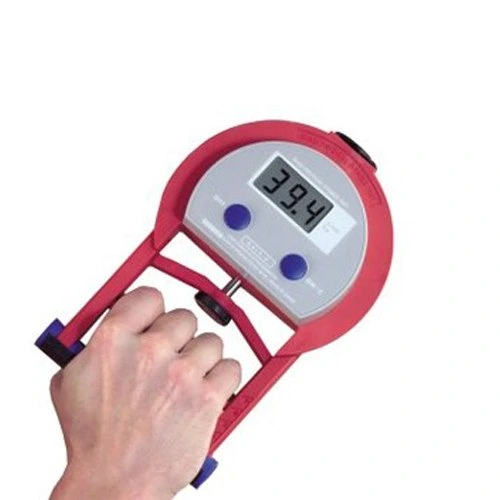
- Pinch Strength Test: The pinch strength test measures the strength of your pinch grip, which involves the thumb and other fingers. There are two common pinch grip variations: lateral (key pinch) and three-point (tip pinch).
– For lateral pinch, hold an object like a light weight plate between your thumb and the side of your index finger. Keep going up in weight till you start to lose grip. Do this for both hands. Note the maximum weight you could hold in each hand.
– For three-point pinch, hold a medium to heavy weight plate between your thumb, index, and middle fingers. Squeeze as hard as you can to prevent the plate from falling.
Record the weight of the heaviest plate you could hold in each hand.
- Manual Grip Strength Test: While not as precise as using a dynamometer, you can use a manual approach to test grip strength:
– Ask a friend to start a timer, or note the time on a running clock.
– Find a pull-up bar and get to a dead-hang position
– hang for as long as possible (until failure)
– Note the amount of time you were able to hang on.
As you start training your grip and fore-arms, you will start to notice dead-hang time increasing.
- A Formal Technical Clinical Assessment: If you’re undergoing physical therapy or medical evaluation, healthcare professionals might use grip strength tests to assess your hand function and monitor your progress. They may use specialized instruments and standardized protocols.
Keep in mind that grip strength can vary based on factors like age, gender, fitness level, and hand dominance. It’s a good idea to perform grip strength tests periodically to track your progress and identify any changes in your strength levels. If you’re aiming to improve your grip strength, consider incorporating grip-specific exercises into your training routine, such as wrist curls, farmer’s walks, and hanging variations.
How Does Grip Strength Change with Age?
Grip strength tends to change with age due to a combination of physiological, musculoskeletal, and lifestyle factors. Generally, grip strength tends to peak in early adulthood and gradually declines as people get older. Here’s how grip strength changes across different age groups:
- Young Adults (20s to 30s): Grip strength typically reaches its peak during early adulthood. At this age, muscle mass and function are optimized, and individuals are often engaged in physically active lifestyles. However, individual variations can still exist based on factors like genetics, physical activity level, and overall health.
- Middle-Aged Adults (40s to 50s): Grip strength might begin to show minor declines in middle-aged adults, especially if there’s a decrease in physical activity or the onset of certain age-related changes. These changes can include a gradual decline in muscle mass (sarcopenia), joint flexibility, and overall muscle function.
- Older Adults (60s and Beyond): Grip strength tends to decline more noticeably as individuals move into older adulthood. This decline can be influenced by factors such as reduced muscle mass, joint degeneration, decreased nerve conduction, and other age-related changes. Additionally, health conditions such as arthritis, osteoporosis, and other chronic illnesses can contribute to decreased grip strength.
It’s important to note that while grip strength does generally decline with age, maintaining an active lifestyle and engaging in regular strength training exercises can help mitigate the extent of this decline. Resistance training and specific grip-strengthening exercises can help older adults maintain muscle mass and overall functional capacity, including grip strength.
Grip strength is also used as an indicator of overall health and functional status in older adults. It has been linked to factors such as mortality risk, mobility, and the ability to perform daily tasks independently. As a result, many geriatric assessments include grip strength measurements to gauge an individual’s physical condition.
Regular physical activity, a balanced diet, and appropriate strength training can contribute to maintaining grip strength and overall muscle function as you age. If you’re concerned about your grip strength or overall physical health, it’s a good idea to consult with a healthcare professional or a qualified fitness trainer to create a safe and effective exercise plan tailored to your needs and abilities.
Get a Grip - It Could Change Your Entire Workout Routine
Strengthening your grip is not only important for lifting weights, but to support your every-day activities. Even if you didn’t start young, training your hands and forearms to lift heavy weights has life-long benefits. You can start small at home, or go all out at the gym. With focus and time you will be surprised at how strong you can get!
Hope you found this useful. Check out my other strength training posts as well.
